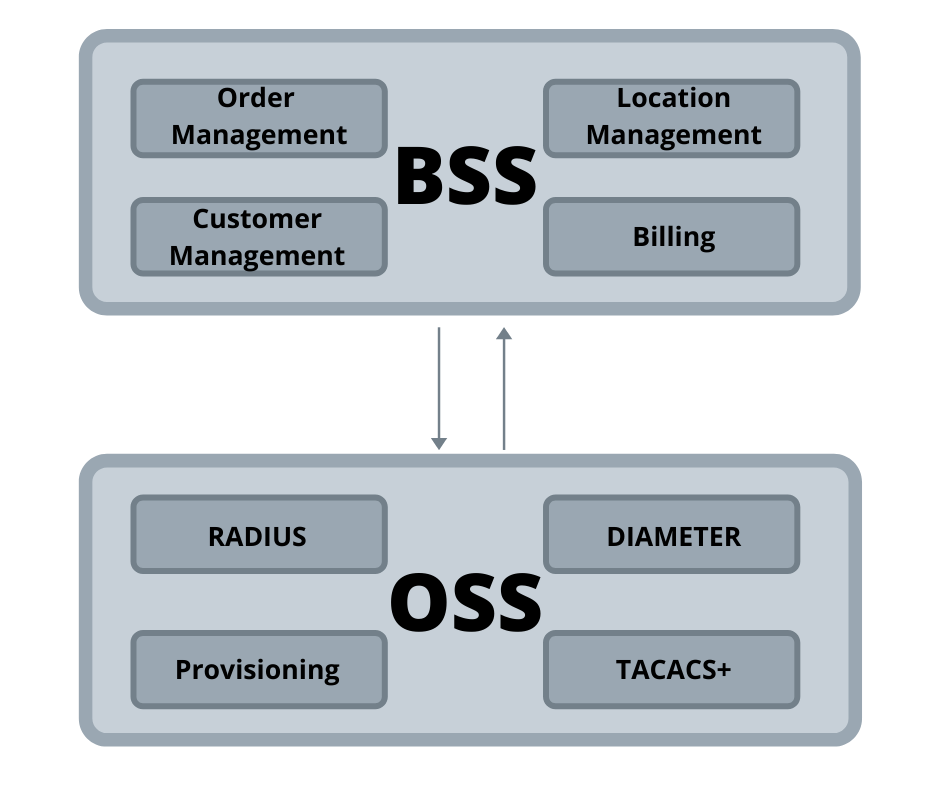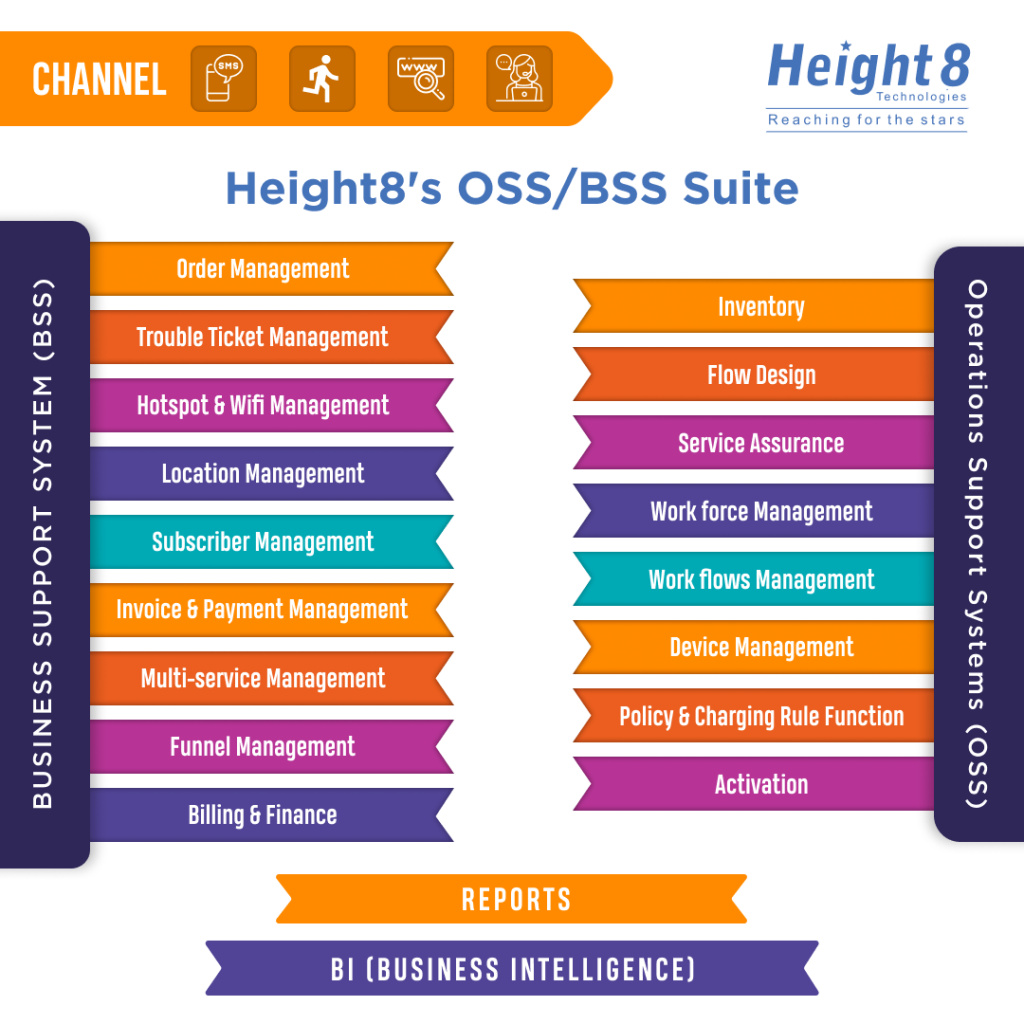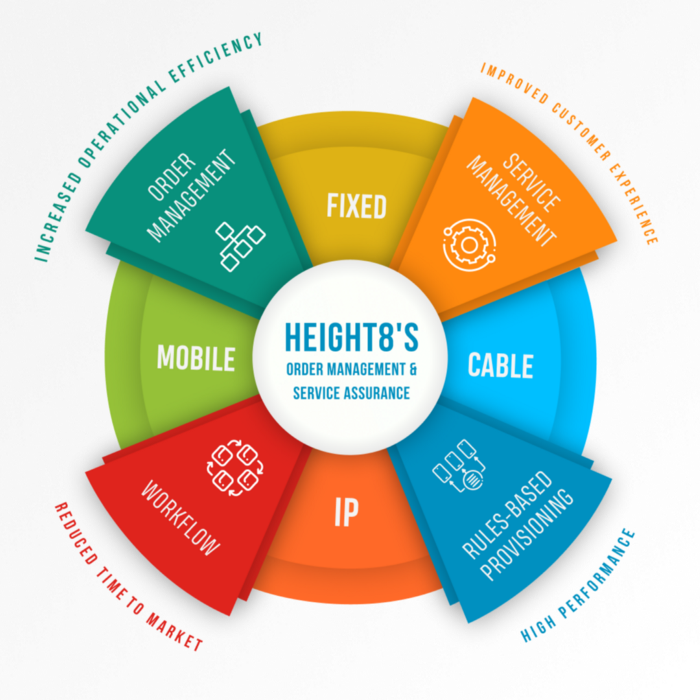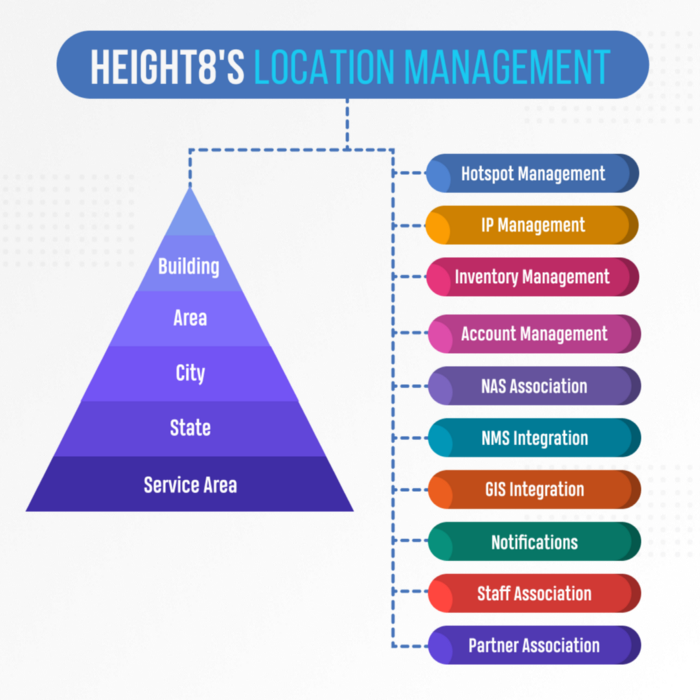Height8
25 December 2020
OSS/BSS Solutions For ISP and Telecom
What is OSS?
OSS stands for Operational/Operations Support System. OSS is IT running for Communications Network. An operational support system (OSS) is a set of programs that help a communications service provider to monitor, control, analyze, and manage a telephone or computer network.
The purpose of OSS is to ensure that:
- The network is efficient
- Services are profitable &
- Customers are happy
OSS includes a software application that supports back-office work, which operates a telco’s network to manage customer services. Network planners, service designers, supports, operations, and engineering teams use OSS. Under the CTO and COO, Product managers and senior management also rely on OSS sometimes.
What is BSS?
Business support systems (BSS) are the components that a telecommunications service provider (or telco) uses to run its business operations towards customers. BSS is a software application that supports customer-facing activities such as billing, order management, call center automation, and customer relationship management.
Digital BSS Transformation:
Digital BSS solution is an end-to-end integration offering consisting of modules such as digital-first customer experiences and automates business processes.
It supports the following processes:
- Order management
- Trouble ticket management
- Hotspot & Wifi management
- Location management
- Subscriber Management
- Invoice & Payment Management
- Multi-service Management
- Funnel Management
- Billing & Financials
The relation between OSS and BSS
Before, OSS and BSS had a clear separation. For example, Deliver product X to customer Y. BSS captures the order, sets up the billing, and passes the order to OSS for fulfillment.
Now, networks and services are more flexible, complicated, and telco offers more differentiated products. OSS and BSS must be connected based on what is ordered by the customer, what service they already had, the network they would use, currently available resources, how far they were from the telephone exchange… and so on. Offering a customer service is now managed by both BSS and the ability of OSS (and the local network) to deliver certain products.

Role of OSS/BSS in business
There is an increasing trend towards an integrated OSS/BSS platform to support the business. This can be witnessed in the area of service assurance, whereby an integrated OSS/BSS is required to provide higher SLA by tracking the service performance, proactively identifying network failures, initiating resolution action, and notifying high-priority customers. The service management also requires integrated BSS and OSS platforms where order and fulfillment involve multiple network resources. The integrated system keeps the customer-facing team informed about progress, changes, or delivery issues.
In order to operate a large-scale broadband service, many functionalities need to be implemented as a set of automated processes to make them as scalable as possible. These include:
Customer management: Marketing, Customer Resource Management
Service fulfillment: Order management, delivery, provisioning, install
Customer support: Technical support (help desk), onsite support, repair
Collecting revenue: Billing
Service Assurance: Managing faults, trouble tickets, SLAs, QoS, etc.
Height8’s OSS/BSS Solutions

View & Analytic of your Business performance
Height8’s OSS and BSS system gives you a complete view of your Business in a Single Screen. We have a Pre-designed business model to generate analytics to identify leakages, track disconnections, and intelligence on how to increase customer acquisition.

AAA Server
AAA security increased flexibility and control access configuration and scalability, access to authentication methods such as RADIUS, TACACS+, and use of multiple backup systems.
Height8’s AAA is a carrier-grade access control server with support RADIUS, DIAMETER, and TACACS+ protocols in a single stack. The solution is access agnostic and can support any vendor with standard protocols.
Customer Management
- Individual & corporate customer profile and payment account management
- Rule-based order and contact management
- Customer inquiry transfer, assignment, and processing
Inventory Management
Height8’s Inventory starts from the Procurement process to Deployment. It is tightly integrated with OSS, BSS, and CRM. Tangible or intangible inventory can be maintained in the system. The solution includes the order procurement and deployment process based on workflow and access rights.
Multiple inventory items can be created in the system with different measurement units. Those items can be stored at different warehouses. Stock can be tracked as on overall and warehouse wise, and it can be consumed as and when required based on associated workflow.
Order Management
Height8’s OSS/BSS order management performs the following functions:
- The input of customer information, credit check, plan options
- Lookup of capacity availability and ability to provision
- The entry of selected plan and options, collection of initial payment if needed
- Equipment order entry
- Scheduling of installs
The BSS system pulls information required to complete these tasks from various databases in the BSS itself, as well as from the OSS system.

Service Assurance
Service Assurance systems are now integrated across OSS/BSS to track service performance and ensure customer service-level agreements (SLA) are met. Service Assurance may also proactively identify network failures, initiating resolution action, and notifying high-priority customers.
Location Management
We provide a Location Management facility in Hotspot Management, Account Creation, IP Management, Inventory Management, NAS Association, NMS Integration, GIS Integration, Notifications, and Staff & Partner Association in our Application.
We can configure the following levels in Locations Management:
- Service Area
- State
- City
- Area
- Building

Hotspot & Wifi Management
WiFi management includes:
- Plan creation
- Home page (Dashboard) Configuration
- Data Administration
- Device management
- Plan Group management &
- Voucher management
Hotspot management also allows configuring backhaul link bandwidth details that connect IP/MPLS backbone networks.
Trouble Ticket Management
Height8’s Ticket Management Modules allows creating a ticket for:
- Subscribers
- Services
- Service Assurance
- Service Fulfilments
- Billing &
- Payment
Operators can build their knowledge/solution database based on complaints they receive on a day to day basis. This helps other CSRs to resolve subscribers’ issues quickly. Trouble tickets can be auto escalated based on time or manually.
Billing & Financials
Once service is activated and the customer is using it, the process of billing is initiated. This process may be largely automated in the BSS system to occur typically on a monthly cycle. However, the BSS billing components may rely on data from the OSS systems to apply credits caused by outages; for example, For enterprise customers, especially, the Service Level Agreement (SLA) is an important contract deliverable that must be met by the service provider and therefore tracked and reported.
Conclusion
Height8’s experience in operating large consumer and enterprise broadband networks can help service providers to create a successful business. Height8’s OSS/BSS technologies reduce costs, increase growth, provide seamless integration, and allow a service provider to focus on running its core business while Height8 runs the network.
